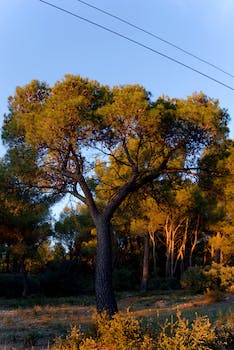

-
Table of Contents
- Introduction
- The Natural Beauty of the Great Divide: Exploring the Magnificence of this Iconic Landmark
- Understanding the Geological Significance of the Great Divide: A Closer Look at its Formation and Impact
- Cultural and Historical Significance of the Great Divide: Celebrating the Stories and Traditions of the Region
- Q&A
- Conclusion
Embrace the awe-inspiring beauty of the Remarkable Great Divide.
Introduction
The Great Divide is a term used to describe a significant separation or division between two contrasting entities. In various contexts, it can refer to geographical, social, economic, or ideological divisions that exist within societies or between different nations. Appreciating the remarkable Great Divide involves recognizing and understanding the profound impact it has on shaping our world and the diverse perspectives and experiences it encompasses.
The Natural Beauty of the Great Divide: Exploring the Magnificence of this Iconic Landmark
The Great Divide is a remarkable natural landmark that stretches across North America, separating the watersheds that flow into the Pacific Ocean from those that flow into the Atlantic Ocean. This iconic divide runs along the crest of the Rocky Mountains, spanning over 3,000 miles from Alaska to Mexico. The Great Divide is not only a physical boundary but also a symbol of the diverse and awe-inspiring natural beauty that can be found in this region.
One of the most striking aspects of the Great Divide is its sheer size and scale. The towering peaks of the Rocky Mountains create an imposing barrier that cuts through the landscape, creating a dramatic contrast between the eastern and western slopes. This rugged terrain is home to a wide variety of plant and animal species, many of which are unique to this region. From the majestic grizzly bear to the elusive mountain goat, the Great Divide is a haven for wildlife enthusiasts and nature lovers alike.
In addition to its biological diversity, the Great Divide also boasts a stunning array of geological features. The mountains themselves are a testament to the immense forces that have shaped this landscape over millions of years. From the jagged peaks of the Canadian Rockies to the gentle slopes of the Colorado Plateau, the Great Divide offers a glimpse into the geological history of North America. The region is also home to numerous glaciers, which have carved out deep valleys and left behind breathtakingly beautiful lakes and waterfalls.
One of the best ways to appreciate the natural beauty of the Great Divide is to explore its many national parks and protected areas. These protected areas offer visitors the opportunity to hike, camp, and immerse themselves in the stunning landscapes that make up this iconic landmark. Whether it's the pristine wilderness of Banff National Park in Canada or the rugged beauty of Rocky Mountain National Park in the United States, there is no shortage of opportunities to experience the magnificence of the Great Divide.
For those who prefer a more leisurely approach, there are also numerous scenic drives and train routes that traverse the Great Divide. These routes offer breathtaking views of the mountains and valleys, allowing visitors to take in the grandeur of this natural wonder from the comfort of their own vehicle or train car. Whether it's the famous Icefields Parkway in Canada or the historic Durango and Silverton Narrow Gauge Railroad in the United States, these routes provide a unique perspective on the beauty of the Great Divide.
In conclusion, the Great Divide is a truly remarkable natural landmark that showcases the diverse and awe-inspiring beauty of North America. From its towering peaks to its pristine lakes and waterfalls, this iconic divide offers a glimpse into the geological and biological history of the region. Whether you choose to explore its national parks and protected areas or simply take a scenic drive along its routes, there is no denying the magnificence of the Great Divide. So, take the time to appreciate this remarkable natural wonder and let its beauty inspire you.
Understanding the Geological Significance of the Great Divide: A Closer Look at its Formation and Impact

The Great Divide is a remarkable geological feature that stretches across North America, separating the continent's watersheds into those that flow eastward and those that flow westward. This natural boundary has played a significant role in shaping the landscape and influencing the distribution of water resources in the region. Understanding the formation and impact of the Great Divide provides valuable insights into the geological history of North America.
The formation of the Great Divide can be traced back millions of years to the tectonic forces that shaped the continent. The North American continent was once part of a larger supercontinent called Pangaea, which began to break apart around 200 million years ago. As the continent split, a massive rift formed, creating a deep valley that would eventually become the Rocky Mountains.
Over time, the forces of erosion and uplift shaped the Rocky Mountains into the majestic range we see today. The Great Divide runs along the crest of these mountains, marking the highest points and separating the watersheds. Rainfall and snowmelt on the eastern side of the divide flow into the Atlantic Ocean, while water on the western side flows into the Pacific Ocean.
The impact of the Great Divide on the region's water resources cannot be overstated. The divide acts as a natural barrier, preventing water from freely flowing between the two sides. This has led to the development of distinct ecosystems and the formation of numerous rivers and lakes along the divide.
On the eastern side of the divide, the water flows into the Mississippi River system, which is one of the largest drainage basins in the world. This vast network of rivers and tributaries provides water for agriculture, industry, and human consumption across the Midwest and the Gulf Coast.
On the western side of the divide, the water flows into the Columbia River system, which is known for its abundant hydropower potential. The Columbia River and its tributaries have been harnessed to generate electricity, providing a significant source of renewable energy for the Pacific Northwest.
The Great Divide also has a profound impact on the region's climate. The mountains act as a barrier, causing air masses to rise and cool, leading to the formation of precipitation. This phenomenon, known as orographic lifting, results in higher rainfall and snowfall on the western side of the divide, creating a stark contrast with the drier climate on the eastern side.
In addition to its geological and hydrological significance, the Great Divide holds cultural and historical importance. Native American tribes have long revered the mountains and rivers along the divide, considering them sacred and integral to their way of life. European explorers and settlers also recognized the strategic importance of the divide, using it as a navigational landmark and a gateway to the West.
In conclusion, the Great Divide is a remarkable geological feature that has shaped the landscape and influenced the distribution of water resources in North America. Its formation can be traced back to the tectonic forces that shaped the continent, and its impact is evident in the distinct ecosystems, rivers, and lakes that have developed along its path. Understanding the significance of the Great Divide provides valuable insights into the geological history and cultural heritage of the region.
Cultural and Historical Significance of the Great Divide: Celebrating the Stories and Traditions of the Region
The Great Divide, also known as the Continental Divide, is a remarkable geographical feature that stretches across North America. It separates the watersheds that flow into the Pacific Ocean from those that flow into the Atlantic Ocean. This natural boundary has not only shaped the physical landscape of the region but also holds immense cultural and historical significance.
The Great Divide has long been a source of inspiration for artists, writers, and explorers. Its majestic peaks and rugged terrain have captivated the imaginations of many, leading to the creation of countless stories and traditions. Native American tribes, such as the Blackfeet and the Shoshone, have revered the Great Divide for centuries, considering it a sacred place where the spirits of their ancestors reside.
The cultural significance of the Great Divide is also evident in the traditions and practices of the early European settlers. The fur trappers and mountain men who ventured into the region in the 19th century relied on the Great Divide as a navigational landmark. They developed a deep respect for the mountains and rivers that make up this natural boundary, recognizing the challenges and dangers they posed.
One of the most famous stories associated with the Great Divide is that of the Lewis and Clark expedition. In their quest to find a water route to the Pacific Ocean, Meriwether Lewis and William Clark encountered the rugged terrain of the Rocky Mountains. The Great Divide presented a formidable obstacle, forcing the explorers to make a difficult decision. They ultimately chose to follow the Missouri River, which flows eastward, rather than attempting to cross the mountains.
The Great Divide also played a significant role in the development of the western United States. The discovery of gold in the Rocky Mountains during the mid-19th century sparked a gold rush, attracting thousands of prospectors to the region. The mining towns that sprang up along the Great Divide became vibrant centers of commerce and culture, with their own unique traditions and stories.
Today, the cultural and historical significance of the Great Divide continues to be celebrated and appreciated. The region is home to numerous national parks and protected areas, which preserve its natural beauty and provide opportunities for outdoor recreation. Visitors can hike along the Continental Divide Trail, a 3,100-mile-long path that follows the spine of the Rocky Mountains, offering breathtaking views and a chance to connect with the history and traditions of the region.
In addition to its natural beauty, the Great Divide is also a symbol of unity and connection. It reminds us that despite our differences, we are all part of a larger whole. The waters that flow from the mountains on either side of the divide eventually merge, joining together to form the mighty rivers that sustain life in North America.
In conclusion, the Great Divide holds immense cultural and historical significance. It has inspired countless stories and traditions, shaped the development of the western United States, and continues to be celebrated and appreciated today. Whether through exploration, art, or outdoor recreation, the Great Divide invites us to appreciate the remarkable beauty and interconnectedness of our world.
Q&A
1. What is the Remarkable Great Divide?
The Remarkable Great Divide refers to a significant division or separation between two distinct entities or concepts.
2. Why is the Remarkable Great Divide appreciated?
The Remarkable Great Divide is appreciated for its ability to highlight contrasting perspectives, ideas, or characteristics, which can lead to a deeper understanding and appreciation of diversity.
3. How can one appreciate the Remarkable Great Divide?
One can appreciate the Remarkable Great Divide by recognizing and valuing the unique qualities and differences that exist within it, fostering open-mindedness, and seeking to learn from the diverse perspectives it presents.
Conclusion
In conclusion, appreciating the remarkable Great Divide involves recognizing and valuing the significant differences and disparities that exist within society. It requires acknowledging the various factors that contribute to this divide, such as socioeconomic status, education, and access to resources. By appreciating the Great Divide, we can work towards addressing these inequalities and striving for a more equitable and inclusive society.












